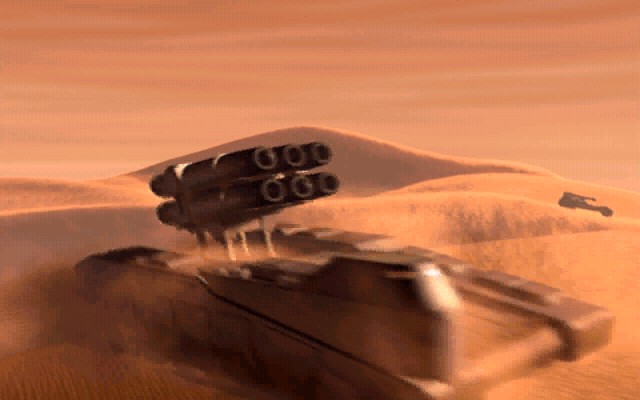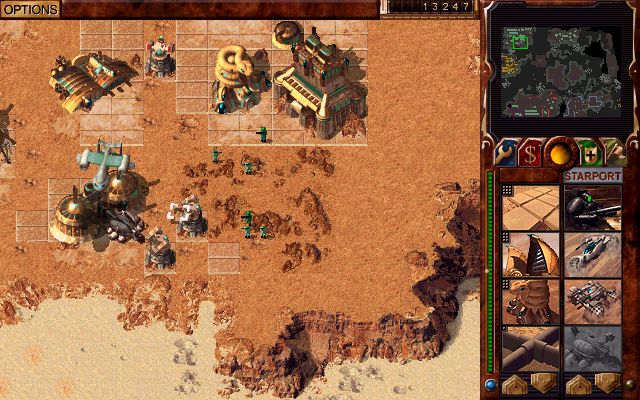
System Requirements: Pentium 100 Mhz, 16 MB RAM, 100 MB HDD, Win95 But in the end we’ve played this type of game a hundred times, and originality is something Dune 2000 is lacking. It’s got an impressive cast under its wing (a trademark of Westwood in offering live-action cutscenes), and the gameplay might rub you the right way if you’re a huge fan of the C&C mold. Outside of the aforementioned unit balancing problems and sense of sameness, Dune II is still pretty playable. The effect of all this is that he who builds nothing but tanks will usually do quite well in the game the bane of the tank rush is still alive and well in Dune 2000.

Airpower exists, but in practice does not play a significant role. The artillery is powerful, but so lightly-armored and short-ranged it gets demolished by tanks. Infantry are worthless in the face of tanks tracked units drive over them effortlessly. Other problems with the game have filtered down through the years. All of the action takes place on the same planet, so it’s only sand and sand. The AI is eerily similar to that of Dune II, which is to say it’s dumb, and the environments get stale fast. There is no patrol feature or scout option, or any waypoint system at all. The engine does have its own peculiar limitations, like the inability to give buildings rally points or train more than one unit at a time. The Dune engine is pretty much identical to Command & Conquer, and the interface follows suit. The only other interesting unit is one that temporarily causes an enemy to change sides. There are a couple of special units, including a Sonic Tank that does damage with sound waves (units that attend heavy metal concerts are immune to this attack).

Players are given the standard infantry, tanks and light assault vehicles. The three sides are almost identical, differing only in a couple advanced units. With few exceptions, the units in Dune 2000 are the same as in the original.


 0 kommentar(er)
0 kommentar(er)
